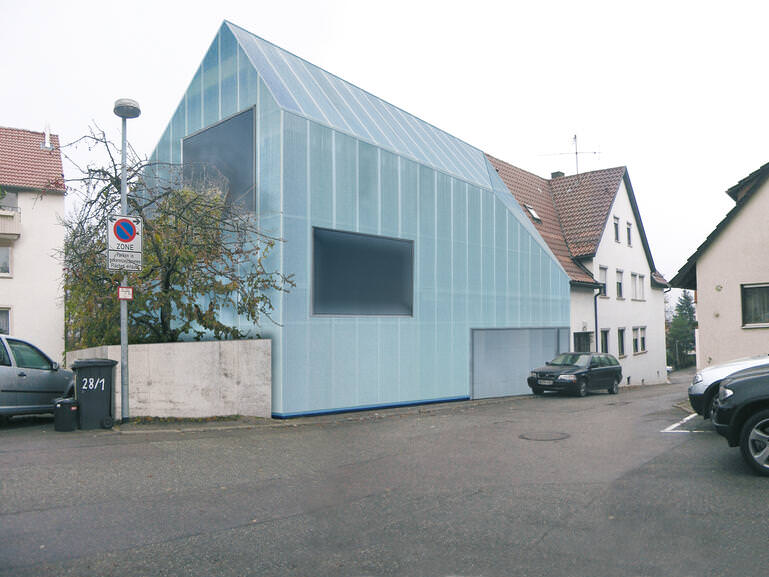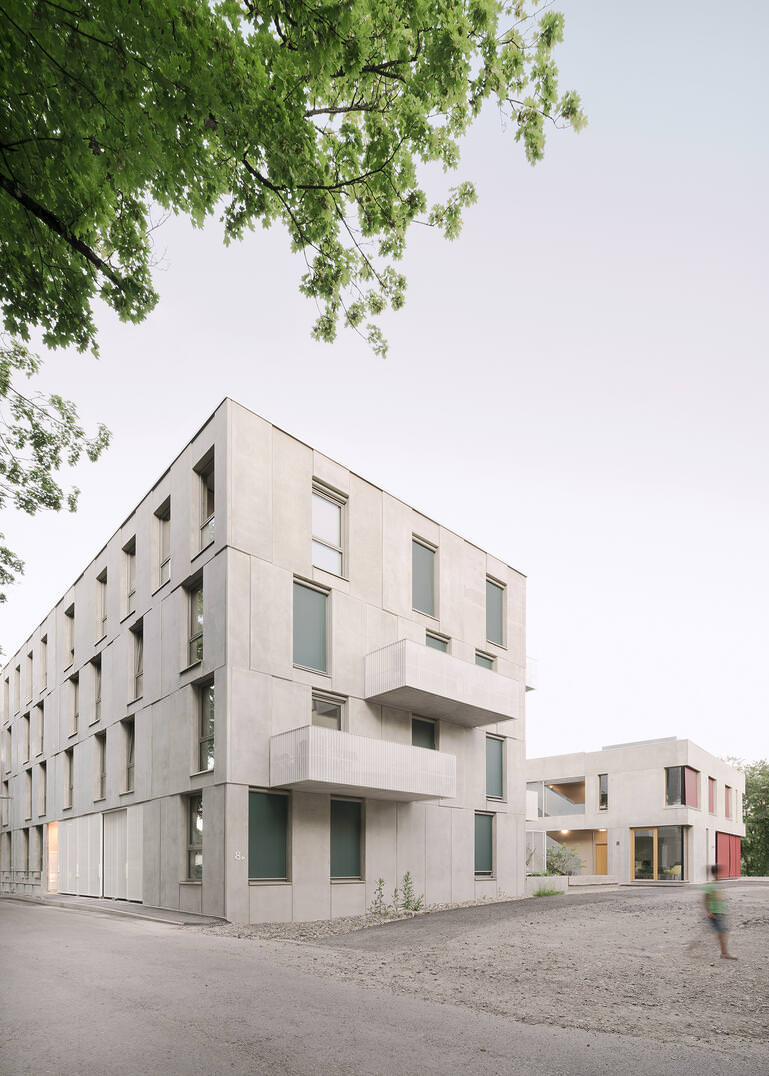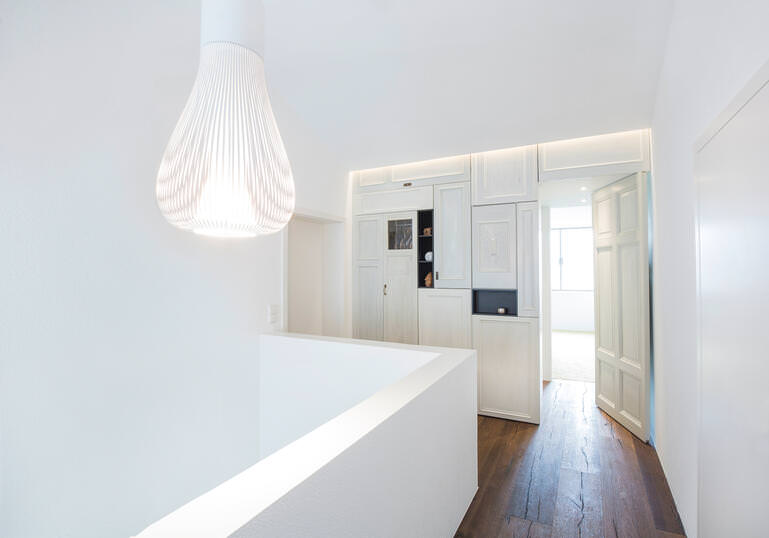Tell a story
Loft S, Stuttgart
Expansion of the attic floors of a listed Wilhelminian-style building in the west of Stuttgart - The break-up of the historical ground plan structures creates spacious, flowing spaces. Various motifs of the stock are picked up and reinterpreted, other set pieces remain visible. The rooms tell their story, the interventions tie in here and continue this story.
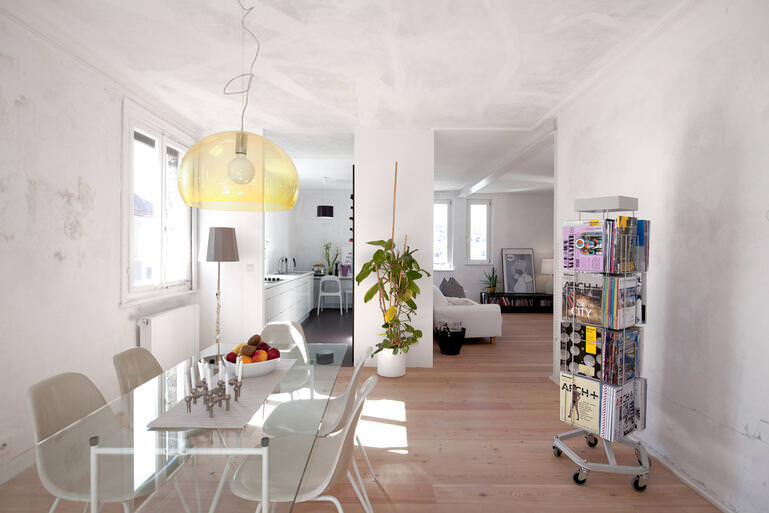
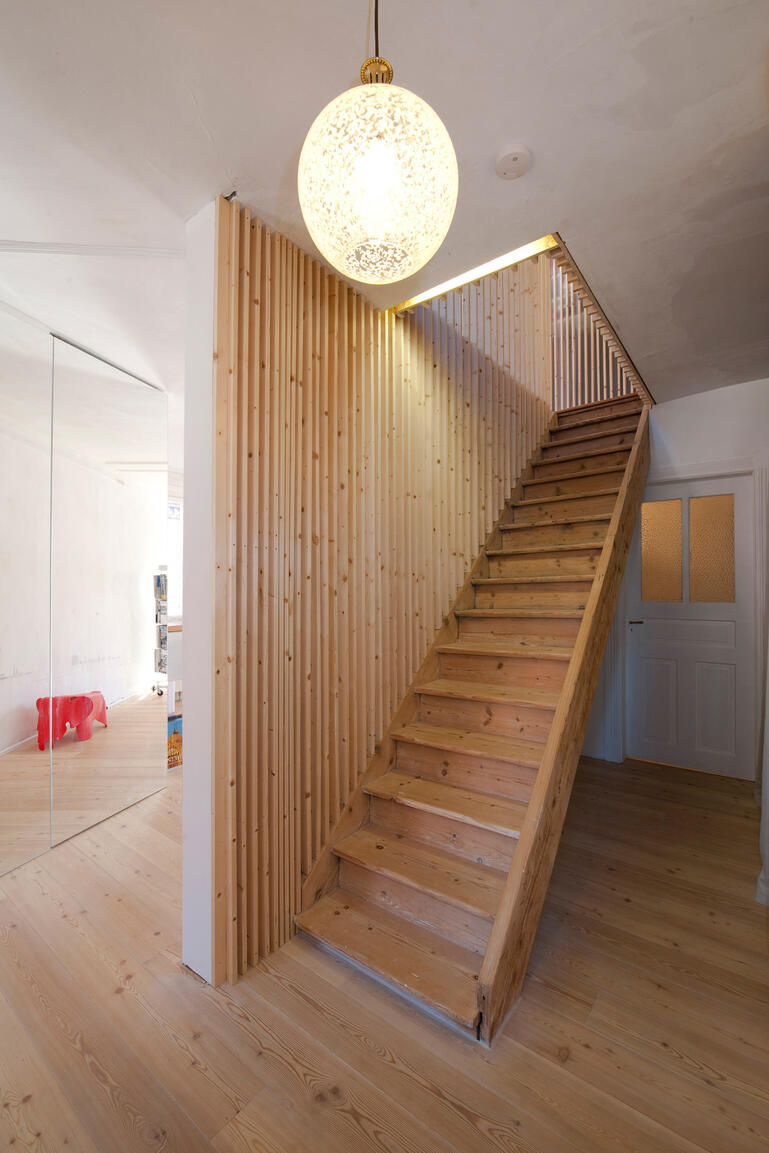
Activate potential
Before the conversion, only the courtyard half of the attic floor was used as a small apartment, 40 square meters without adequate heating, without bathroom. The street-side servants' rooms stood empty. A conclusion to the staircase was not available. The roof over it was not developed, only lattenverschläge were used for storage purposes. As a result of the renovation, both levels have been merged, the previously freely accessible staircase to the attic has been integrated into the apartment, creating a spacious retreat, almost a house in the house. The classic division of the Wilhelminian floor plans - kitchen and adjoining rooms to the courtyard, living areas to the street - was broken up, whereby the living area now also to the quiet courtyard facing west and the balcony oriented.
Open space
The extremely fragmented inventory plan apparently did not provide a good basis for spacious, light-flooded rooms. Nevertheless, the declared goal was to create a fluid continuum of space with different semi-open areas and a minimum of "classic" enclosed rooms in addition to the technical and constructive refurbishment, in order to make the entire depth of the building and the different external aspects tangible. The concept of an open space structure continues with the expansion of the roof truss. Here, a roof incision, which is not visible from the outside, becomes the central spatial element. He opens the room to the sky and ensures the generous exposure of the upper floor without the building-age character of the building in its external appearance
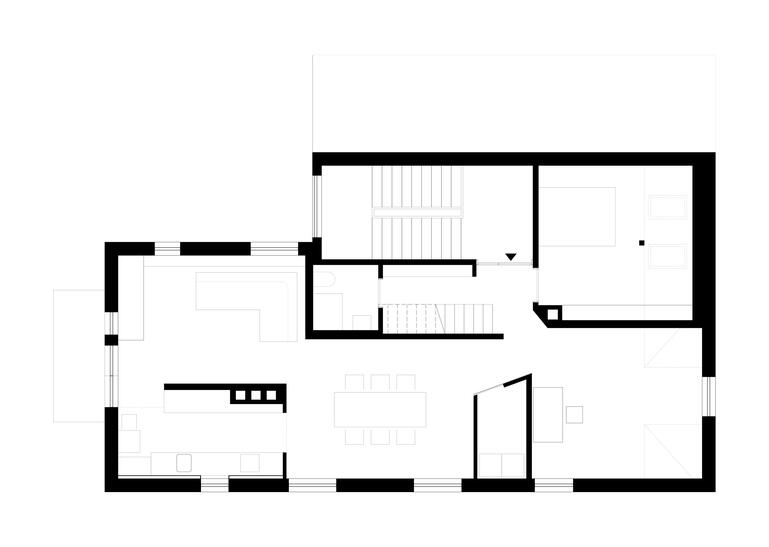
The small scale of the old chamber plan gives way to a generous sequence of open spaces.

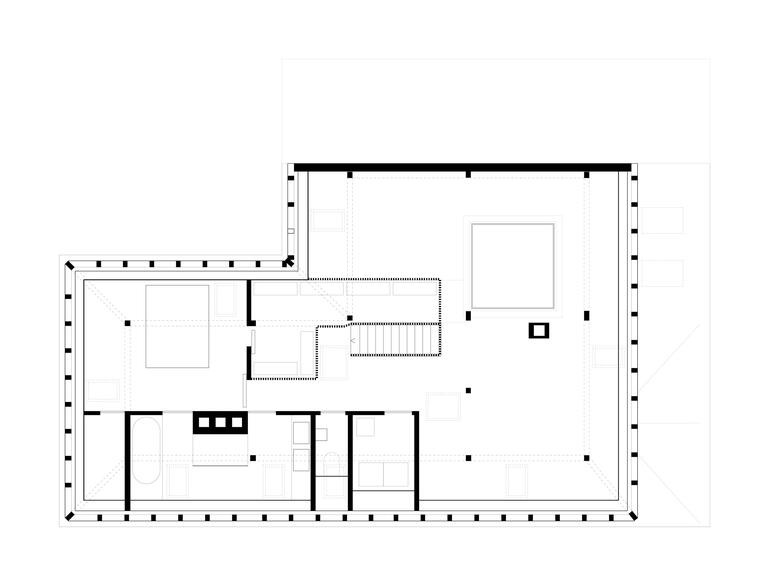
In dialogue
Old and new interact with each other in different ways. Historic elements are visibly preserved, reworked or reused elsewhere. New elements in form and materiality are a clear reference to the old building as the installation of fine wooden slats, reminiscent of the slats and now as a continuous room element the stairs to the upper floor accompanied and there as a filter-like space between the storage space and the open areas spread. Other innovations, however, differ significantly in their style and set individual clear contrast points such as the all-round mirrored roof incision or they carry the potential of new history as the washstand of untreated, solid brass sheet, which will soon begin its own patina.
Old and new interact with each other in different ways.
Expose layers
Reminiscent of the charm of bygone days, the historical layers have been exposed on the wall and ceiling surfaces and only reworked with a fine white, semitransparent glaze. Paint residues of the former wall coatings and different plastering grounds shimmer through. You can feel the history of the former servant room. The traces of the interventions remain everywhere as a matter of course visible without their design being overshadowed: the connections of the removed partitions were only roughly filled out. You can recognize them and continue to read the former floor plan.

Project information
Location
Stuttgart, Germany
Project status
completed
Team
Tobias Bochmann
Photography
Rolf Schwarz
Area
140 m²
Period
2009
